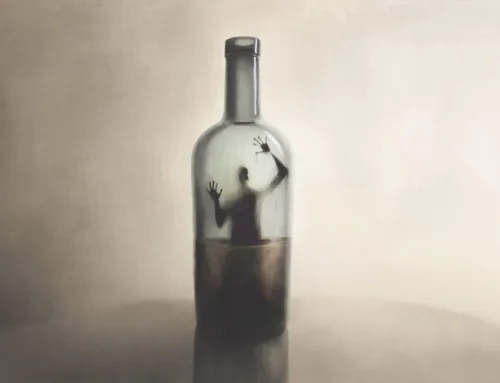Understanding Alcoholism: Statistics, Signs and State-by-State Consumption
Alcohol is a prevalent part of socializing and daily life in many cultures. However, its widespread use can sometimes blur the line between casual drinking and alcohol abuse. Understanding the statistics behind alcohol abuse, recognizing the signs and exploring alcohol consumption by state can provide a clearer picture of the scope of alcoholism and its impact.
Statistics on Alcohol Abuse
Alcohol abuse and alcoholism are significant public health issues. According to the National Institute on Alcohol Abuse and Alcoholism (NIAAA), in 2020, about 14.1 million adults in the United States had alcohol use disorder (AUD), commonly known as alcoholism. This figure represents approximately 5.6% of the adult population.
Key Statistics
1. Prevalence of AUD: Around 5.6% of American adults (about 14.1 million people) struggle with alcohol use disorder.
2. Youth Impact: Approximately 1.7 million adolescents aged 12-17 reported alcohol use in the past month, with 414,000 of them experiencing AUD.
3. Binge Drinking: Nearly 25.8% of adults reported binge drinking in the past month, with higher rates among young adults aged 18-25.
4. Gender Differences: Men are more likely to have AUD than women, with 9% of men and 4.6% of women affected.
5. Economic Cost: Alcohol abuse costs the U.S. economy about $249 billion annually, including healthcare expenses, lost productivity and criminal justice costs.
These statistics paint a sobering picture of how pervasive and widespread alcohol abuse is in the United States.
Signs of Alcohol Abuse
Recognizing the signs of alcohol abuse is crucial for early intervention and treatment. Certain behaviors may indicate that an individual has surpassed casual drinking and has a more serious problem.
Behavioral Signs
1. Inability to Limit Drinking: Regularly drinking more than intended or being unable to cut down
2. Neglecting Responsibilities: Failing to fulfill work, school or home obligations due to drinking
3. Risky Behaviors: Engaging in dangerous activities while intoxicated, such as driving or unsafe sex
4. Social and Interpersonal Problems: Continuing to drink despite problems caused or worsened by alcohol
Physical Signs
1. Tolerance: Needing more alcohol to achieve the same effects
2. Withdrawal Symptoms: Experiencing symptoms like nausea, sweating, shakiness or anxiety when not drinking
3. Health Issues: Suffering from liver damage, cardiovascular problems or cognitive impairments
Psychological Signs
1. Craving: A strong desire or urge to drink
2. Loss of Control: Being unable to stop drinking once started
3. Preoccupation with Drinking: Spending a lot of time drinking, obtaining alcohol or recovering from its effects
Recognizing these signs early can help individuals seek treatment and support before alcohol abuse escalates into full-blown addiction.
Alcohol Consumption by State
Alcohol consumption varies significantly across different states, influenced by cultural, economic and regulatory factors. Understanding these variations can provide insight into regional patterns of alcohol use and abuse.
High Consumption States
According to the Centers for Disease Control and Prevention (CDC), some states have notably higher rates of alcohol consumption:
1. New Hampshire: Consistently ranks at the top for per capita alcohol consumption, largely due to its lenient alcohol laws and tax policies.
2. Wisconsin: Known for its beer culture, Wisconsin has high rates of both casual consumption and binge drinking.
3. Montana and North Dakota: These states also see high levels of alcohol consumption, particularly in rural areas where social activities often center around drinking.
Low Consumption States
On the other end of the spectrum, states with lower alcohol consumption rates include:
1. Utah: With strong cultural influences from the Mormon population, Utah has strict alcohol laws and low consumption rates.
2. West Virginia: Economic factors and a lack of nightlife contribute to lower alcohol use.
3. Oklahoma: Similar to West Virginia, lower economic activity and stringent alcohol regulations result in reduced consumption.
Regional Binge Drinking Trends
Binge drinking is a particular concern in certain areas of the country. For instance:
- Midwest and Northern Plains: States in these regions report the highest rates of binge drinking.
- Southern States: Generally report lower rates of binge drinking, partly due to more restrictive alcohol laws.
Current statistics on alcohol abuse in the U.S. and state-by-state illustrate the pervasive nature of alcoholism. State-by-state variations in alcohol consumption reveal how cultural, economic and regulatory factors influence drinking patterns. In addition, for prompt intervention and treatment, it‘s important to recognize the physical, behavioral and psychological signs of alcohol abuse in individuals. With approximately 5.6% of American adults experiencing AUD, alcohol abuse is a significant and widespread issue. Targeted strategies are needed to address and mitigate the impacts of alcohol abuse across U.S. communities.






